Ten Zany Birds Written by Sherry Ellis Illustrated by Charu Jain Createspace 5/16/2015 978-1-49740458-4 42 pages Ages 3—5 Ten zany birds, singing in a tree, dance at a party, happy as can be. Five with stripes, fours with spots, one with purple polka dots. “When ten little birds get together, it’s …![]()
Viewing: Blog Posts Tagged with: Createspace, Most Recent at Top [Help]
Results 1 - 17 of 17
Blog: Kid Lit Reviews (Login to Add to MyJacketFlap)
JacketFlap tags: Children's Books, rhyming, Picture Books, counting, Createspace, Sherry Ellis, Library Donated Books, Debut Illustrator, Ten Zany Birds, 4-Stars, Charu Jain, subtracting, Add a tag
Blog: Drawing a Fine Line (Login to Add to MyJacketFlap)
JacketFlap tags: coloring book, CreateSpace, drawings of knitting, Amazon, Add a tag
Here is one of the drawings from the book. Its called "Fancy Paisley".
Below is my rough pencil-on-paper drawing of the idea. I wanted to make a nice balance of knit and purl stitches, and have it still look like paisley. I'm not sure you could actually knit this (well, someone could - not sure I'm that good), but the fun of doing this with pencil and paper is that I can 'cheat', if you will, and add in stitches, or half stitches, where you normally wouldn't put them if you were really knitting with yarn and needles. I can also change the scale willy nilly, and have some crazy things going on.

After I get enough of the idea down on paper, I scan it into the computer. The one below is how it looks after I've redrawn it with my pen stylus and my Wacom tablet, using Photoshop. Its exactly like drawing it by hand with pen and ink on paper, only I'm using a 'computer pen' and drawing on a tablet, and the 'ink' is digital. So when I say its all hand drawn, it really is hand drawn. Its not some computer program where I push a button and "make knitting". I sit there for hours and hours and hours until my hand gets cramped and my eyes start to blur, drawing and erasing and re-drawing until I get it the way I want it.
These are some other pieces from the book:
And here is that interesting picture. It was fun putting this one together. I liked making the 'vine' on the one pumpkin look like a piece of yarn.
And re-drawn and all cleaned up, and with a border.
Each piece has a title on the facing page, like this:
Blog: Writing and Illustrating (Login to Add to MyJacketFlap)
JacketFlap tags: Formatting your book, Book, reference, Process, Publishing Industry, How to, CreateSpace, demystify, Add a tag

Roxanne Smolen
Ever think about self-publishing a book using CreateSpace? Maybe you have hesitated because you were nervous about the expertise needed to digitally format the manuscript to look professional. Well, Roxanne Smolen has worked through the process, wrote up the step-by-step process below, and is willing to share it with you.
Here is Roxanne:
I think of myself as an Indie author, although I’m actually a hybrid. I have seven books published by a small publisher. Those books can be found in every book selling venue possible. But honestly, almost all my sales are through Amazon. I started thinking, why sell through a publisher and give them a healthy cut when I can make more money by doing it myself?
So I began self-publishing. I published two middle-grade books that I wrote with my young granddaughters (under the name R.A.P. Smolen), four writer’s advice books that I wrote with seven other authors (under the name of C. S. Writers), a science fiction novel that I wrote about a woman who literally goes to hell (Satan’s Mirror), and the first three novels of my current book series (The Amazing Wolf Boy).
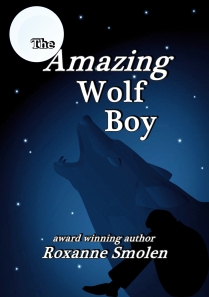 The Amazing Wolf Boy is a humorous paranormal romance for young adults about a sixteen-year-old nerd who turns into a werewolf during Christmas Eve dinner. His parents banish him to Florida (That’s where I live. What a coincidence.) where he fails to fit in with the other kids. You can buy book one here.
The Amazing Wolf Boy is a humorous paranormal romance for young adults about a sixteen-year-old nerd who turns into a werewolf during Christmas Eve dinner. His parents banish him to Florida (That’s where I live. What a coincidence.) where he fails to fit in with the other kids. You can buy book one here.
I’m pretty proud of the book, not only because I wrote it but because I published it. Self-publishing does not carry the stigma it once did. If you are thinking about publishing your own book, my biggest piece of advice is to proofread and edit carefully. It’s so easy to publish a book nowadays authors are putting their work out there with all sorts of errors. You don’t want to be that guy.
The best thing, of course, is to hire an editor. But good editors are expensive, and many of us can’t afford such an investment. If you plan to do it yourself, I have a tip for you—change your font. Just for the editing process. Make it something a little difficult to read, like Broadway or Impact. Something to make you focus. Your brain doesn’t always read what your eyes see; it reads what you thought you wrote. That’s why we can read over a sentence with a misspelled or missing word twenty-five times and not pick it up. If you change your font, your brain will think it’s reading something new and it will pay attention.
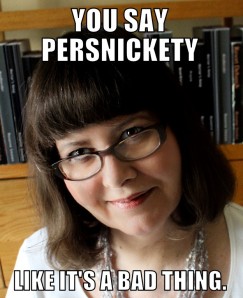 I would also advise you to take care with your book formatting. Readers don’t have the patience to read text with large gaps or ragged indents. On that note, I have written a tutorial.
I would also advise you to take care with your book formatting. Readers don’t have the patience to read text with large gaps or ragged indents. On that note, I have written a tutorial.
How to Format Your Book for CreateSpace
I get a lot of formatting questions, so I thought I’d put it all down in one place. If you find it useful, let me know.
Note: I use Word 2010. Your version of Word might look a bit different, but it should be similar enough for you to figure out.
And now, without further ado, here is how I format a book for CreateSpace.
Ready, Set, Go
- Open your Word .doc
- Set the margins. Go to PAGE LAYOUT –> MARGINS –> CUSTOM MARGINS.
- Under the Margin Tab, make the top 1″, the bottom 1″, the inside .9″, and the outside .6″.
- Orientation should be Portrait.
- Multiple Pages should be changed to Mirror Margins. That’s it for the Margin Tab. Don’t close the box yet.
- Then under the Paper Tab, change the Paper Size to the size of the book you are planning to publish. I like my books to be 8″ by 5″ so I change:
- Width to 5″
- Height to 8″. Then click OK to close the box.
- SELECT ALL (it’s over in the top right-hand corner.) Delete all tabs by using REPLACE (also in the top right-hand corner.)
- Go to the Replace Tab
- Click More
- Click Special
- Click Tab Character
- Leave REPLACE WITH blank
- Click REPLACE ALL
- SELECT ALL
- Click the corner box next to Paragraph.
- Under Indentation, go to SPECIAL
- Select FIRST LINE
- Under BY type .25
- SELECT ALL
- Change line spacing to 1.5
- Click both REMOVE SPACE BEFORE and REMOVE SPACE AFTER so both read ADD.
- SELECT ALL
- Change your font and font size. I usually use Georgia 12pt.
- SELECT ALL
- Justify your margins. Yes! Don’t argue with me.
- SELECT ALL
- Under PAGE LAYOUT, click Hyphenation and Automatic.
- SELECT ALL. Make sure you don’t have any double spaces after punctuation. (This is for all us older authors because we were taught that in high school.)
- Go to the Replace Tab
- Under FIND WHAT, hit the spacebar twice
- Under REPLACE WITH, hit it once
- Click REPLACE ALL
- Make sure the end of every chapter/short story has a new page character.
- Go to PAGE LAYOUT –> BREAKS
- Under Section Breaks, click NEXT PAGE (One caveat to this is if you are publishing a book of short stories. You want each story to start on the right-hand side, right? Or some people want each chapter to start on the right. In that case you would click ODD PAGE.)
- There should be no page numbers, headers, or footers on blank pages.
Front Matter Matters
In order:
- TITLE PAGE
- Use a larger font and make it bold.
- Type your book title about halfway down the page.
- Type your name at the bottom. (This should give you plenty of room to sign at book signings.)
- End the page. (PAGE LAYOUT –> BREAKS –> NEXT PAGE)
- COPYRIGHT PAGE
- Type in your Copyright Notice.
- Example: This is a work of fiction. The characters and events described herein are imaginary and are not intended to refer to specific places or to living persons alive or dead. All rights reserved. No part of this publication may be reproduced, distributed, or transmitted in any form or by any means, including photocopying, recording, or other electronic or mechanical methods without the prior written permission of the publisher except for brief quotations embodied in critical reviews.
- Copyright © (date) by (your name)
- ISBN (Type in the number provided by CreateSpace.)
- You can also add your publishers name, state, website, and logo if you have started your own company.
- End the page. (PAGE LAYOUT –> BREAKS –> NEXT PAGE)
- DEDICATION PAGE
- This is optional. If you are dedicating your book to a loved one or an organization, type it here.
- End the page. (PAGE LAYOUT –> BREAKS –> NEXT PAGE)
- TABLE OF CONTENTS
- You should have a table of contents to list each chapter or short story.
- Go to REFERENCE and click Table of Contents.
- End the page. (PAGE LAYOUT –> BREAKS –> NEXT PAGE)
- NOTES
- If necessary, add a blank page at this point (PAGE LAYOUT –> BREAKS –> NEXT PAGE) so that the first page of your story starts on the right-hand side.
- There should be no page numbers, headers, or footers on the FRONT MATTER (or the back matter either for that matter.)
Back Matter Matters Too
- Add a page for Your Author’s Bio, headshot (I mean a photo, not an actual… although if you’re writing horror and you’re good with make-up…) website, and email address.
- End the page. (PAGE LAYOUT –> BREAKS –> NEXT PAGE)
- Add another page for a list of your previous works and where to buy them.
- End the page. (PAGE LAYOUT –> BREAKS –> NEXT PAGE)
- If you are writing a series, you can put an excerpt of an upcoming book here.
- Remember, there should be no page numbers, headers, or footers on the front or back matter unless you want to use Roman Numerals.
About Your Headers and Footers
- Go to the first page of your story. (Story, not Front Matter.)
- Click INSERT.
- Click HEADER.
- Choose your Header Style. (I usually use Blank.)
- Type the name of your book. (I recommend using a smaller font.)
- Highlight what you just typed and Right align it. (On the Home Tab.)
- Under HEADER & FOOTER TOOLS click ODD & EVEN PAGES.
- Make sure LINK TO PREVIOUS is not selected.
- Now go to the second page of your story.
- Click the Header and type your name.
- Highlight what you typed and Left align it.
- You should now have your Title on the right and your Name on the left on alternating pages.
- Check to be sure the header hasn’t shown up on your Front Matter.
- If it has, delete it and de-select LINK TO PREVIOUS on each page.
- Go back to the first page of your story.
- On the left-hand side of the HEADER & FOOTER TOOLBAR, you will see Page Number. Click it.
- Choose Bottom Of The Page.
- Choose your style. I use Plain Number 2.
- Note: You will have to do this twice—once for the right-hand (odd) side and once for the left-hand (even) side.
- Note: You may have to format the page numbers to get them to run consecutively. To do that, click Page Number again and scroll down to Format Page Number.

Kill the Widows and Orphans
Widow
- A paragraph-ending line that falls at the beginning of the following page/column, thus separated from the rest of the text.
Orphan
- A paragraph-opening line that appears by itself at the bottom of a page/column.
- A word, part of a word, or very short line that appears by itself at the end of a paragraph. Orphans result in too much white space between paragraphs or at the bottom of a page.
Word kills your widows and orphans by default, but the result makes a ragged bottom margin. I’m one of those persnickety people who feel that when you open a book, the bottom margin on both pages should match up. So I kill them manually.
- Click the corner box on PARAGRAPH.
- Click the LINE AND PAGE BREAKS Tab.
- Uncheck Widow/Orphan Control.
- Go through each page of your 500 page book and look for Widows and Orphans, adding or deleting words until the page looks right.
And Another Thing…
The first paragraph of each chapter and after a drop should be flush left, meaning don’t indent. Also, the first letter of the first word of that paragraph should be fancied up. I’m sure you’ve all seen the first letter in a different font with scroll work, etc. The problem is that it messes with the line spacing of the paragraph. The only work-around I know is to insert a picture of the necessary letter in the desired fancy font and then have the text wrap it so there is no problem with the spacing. But that is a lot of work for little gain. I just bold the first letter and leave it in the same font as the rest of the paragraph.
Easy Peasy
When all looks good, you need to save the book as a PDF. Word can do this for you.
FILE –> SAVE AS –> PDF
Now you are ready to upload the .pdf to CreateSpace.
See? It’s as easy as 1, 2, 3… 4, 5, 6… Oh, you get the picture.
Thank you Roxanne for sharing this process with everyone. I know this will help a lot of writers, if not now, later. I am sure they will want to save this for future use. Here is the link to visit Roxanne’s blog: http://www.moonrox.wordpress.com/
Talk soon,
Kathy
Filed under: Book, demystify, How to, Process, Publishing Industry, reference Tagged: CreateSpace, Formatting your book
Blog: Becky's Book Reviews (Login to Add to MyJacketFlap)
JacketFlap tags: Historical Fiction, adult fiction, Jane Austen, 2009, 2011, CreateSpace, library book, adult romance, books reviewed in 2014, Add a tag
Charity Envieth Not. (George Knightley #1) Barbara Cornthwaite. 2009. CreateSpace. 260 pages. [Source: Library]
and
Lend Me Leave. (George Knightley #2) Barbara Cornthwaite. 2011. CreateSpace. 246 pages. [Source: Library]
I absolutely loved reading Charity Envieth Not and Lend Me Leave. These two books tell the novel Emma through the perspective of George Knightley. I almost wish they were combined into one edition, however. Still, I can't begin to recommend these enough to all Austen fans!!!
I enjoyed many aspects of both books. I really, really loved George Knightley. That in and of itself is far from shocking. Dare I say he's probably the best thing about Austen's novel?! I loved seeing the characters (and/or the community) through his eyes. I loved his involvement in the community. I loved meeting various characters--rich and poor, from all classes or statuses. I especially, especially liked Spencer! I loved getting to know his brother John better. And I liked seeing him in the role of uncle! I liked how wide the perspective is--if that makes sense! Emma, to me, comes across as very self-centered, the world through her eyes seem a bit narrow.
I also appreciate how both books treat the character of Emma. I think to fully appreciate Emma, one HAS to see her AS Knightley sees her. This book accomplishes that! I don't think I've ever seen Emma in such a positive light before. And it made me think a bit, what if Emma is blinded to her strengths JUST as she's blinded to her weaknesses. OR in other words, what if the narration is a bit too close to accurately judge her strengths/weaknesses. Of course, Knightley cannot absolutely read all her motives and intentions, so maybe he's reading more compassion, more tenderness, more generosity than is really truly there. But maybe just maybe Emma's heart is bigger than I have previously thought. And maybe just maybe her mind isn't quite as empty as I thought it. I kept asking myself what does Knightley see in Emma that I don't?
I would recommend it to those who already love Emma, and even to those that don't really like her. Knightley is a great hero! And he's definitely worth reading about!
© 2014 Becky Laney of Becky's Book Reviews
Blog: gael writer (Login to Add to MyJacketFlap)
JacketFlap tags: independent self-publishing, J. E. Wideman, Sejal Shah, book reviews, e-books, Amazon, Lulu, Google Books, CreateSpace, Add a tag
Several earlier posts discussed independent self-publishing platforms (ISP) for both e-books and printed books. My experience with Amazon in producing a Kindle edition and a print edition of a YA novel (the print edition with CreateSpace, an Amazon-owned company) was a very satisfying experience, and did not cost me anything. Special support services (formatting, editing, cover design)were available for a fee, but are not necessary for most authors with average skills.
However, after creating and making the book available through an ISP company, the role of marketing the book seems to be left more or less to the author. A wide gamut of on-line vendors, like Amazon Books, Google Books, Barnes & Noble, and others, can be selected to list the book and collect an agreed royalty amount on any sales; however, there may be very little effort by those vendors to find and direct readers to the book. This had been one of the valuable services provided by traditional publishing companies. Besides being gatekeepers of which books can be published, the traditional companies would generally send out copies of the finished book to their lists of nationwide book reviewers and media columnists to help generate an awareness and demand for the book. They might also arrange book tours (one has to smile to think of them trying to get J. D. Salinger to do a book tour). To some extent, the ISP author can do some of this work by searching for independent or organizational reviewers on the Internet, and providing them with the necessary digital or print copies of the book. Some reviews might be provided free, and others by prestigious organizations can cost up to a couple of hundred dollars. The author has better prospects to enlist a reviewer if the book is newly published or has been published within the last two or three months. Consequently, one can see from all this that it would be most effective if the ISP author had some sort of plan, and/or arrangements made, before he ever clicks on the 'publish' button with the ISP.
Some of the positives and drawbacks of the ISP option for an author are illustrated in an interview with author John Edgar Wideman, reported by Sejal Shah in The Writer's Chronicle of May/Summer 2014. Wideman has a son, Danny, who worked for an ISP, named Lulu, and decided to publish a book titled Briefs with them.
Briefs was an experiment. It got all the reviews you could want, under the circumstances. And also because Danny worked there I got a lot of services that if you self-published in Lulu, you'd have to pay for. For example, the expensive business of sending books to reviewers. My self-published electronic book was treated a bit like the old way that my hard copy books had been. A publicity service sent books to the media and tried to get me interviews. A publicity person promoted and followed the book's progress. Books were made available in conventional hard copy format, so that was cheating in a way. The results don't tell a lot about self-publishing or electronic publishing per se. My conclusion after the whole thing was that even with the extras I got, a self-publishing venture was premature. It still is premature, for a person of my status, used to having a certain kind of attention. You're taking a real leap of faith and financially, you're giving up, in my case, what might be a substantial advance.
Not being on bookstore shelves killed Briefs. Someone browsing in that nice bookstore ...is not going to see Briefs. A bookstore has to pay for copies of Briefs, and then they own the copies, can't return them. The other thing is the Times refused to review Briefs, because it was self-published ...They did run a story about the manner in which Briefs was published, but it was not a review. Almost all the articles about the book were not reviews; they were general interest pieces about the publishing industry. That meant no reviews of the book, and at the same time no one was going to trip over the book in a bookstore. So why would anyone buy it? Where would they find it? As far as merchandising strategy, Briefs fell into very predictable cracks. I was disappointed, but I'd do it again. I liked the adventure; I liked working with Danny; and I learned a hell of a lot.As might be concluded from the foregoing discussions and interview excerpt, ISP is a works in progress. There are pluses and minuses in it for most authors, but the business model of the traditional publisher has contemporary issues that need to be addressed, also. One thinks of the music recording industry, which had a business model that served them handsomely for many years and did well for a relatively small number of artists, too. However, the internet opened up possibilities for many more artists that had been shut out by the traditional gatekeepers' system, and brought with it upheavals to the business model that are still ongoing. Now, the book publishing model's turn may have come.
Blog: Kid Lit Reviews (Login to Add to MyJacketFlap)
JacketFlap tags: George Reagan, Lucia Benito, stinkbugs, Children's Books, Chapter Book, Series, aliens, Books for Boys, science fair, Createspace, alien invasions, 3stars, Library Donated Books, Add a tag
 .
.
The Stinkbug Chronicles #1: The Invasion has begun!
By George Reagan
Illustrations by Lucia Benito
Published by CreateSpace 3/18/2014
1-49486752-2
Age 7 to 9 56 pages
.
“Nine-year-old Brandon Phillips loves insects of all kinds. When he chooses to study stinkbugs for the 4th Grade Science Fair, he learns there is more to these peculiar creatures than meets the eye—or the nose! Join Brandon as he begins the exciting journey of learning about and becoming best friends with Walter, a stinkbug that is no pest at all, along the way the two buddies embark on new adventures and learn valuable lessons about life.”
Opening
“Oh no! The invasion has begun! I really hate this time of year.”
Review
Tawny, Brandon’s sister, hates stinkbugs—any insect, really—but Brandon loves this time of year when all things insect embark upon the world. Much to Tawny’s disgust, Brandon begins catching stinkbugs for his science fair project. He plans to study why stinkbugs act differently than other bugs act, yet he has no other bug to compare with the stinkbug. Tawny sneaks a label onto Brandon’s greenhouse stinkbug home—a hamster cage—calling it the Stinkitorium and the name sticks.
Brandon’s science fair does not go as planned, but he does return home with one remaining stinkbug: the stinkbug that followed Brandon around, watching his moves. Walter, the name Brandon gave this mysterious bug, could also speak to Brandon. We find this out more than halfway into the story. From this point on, any physical action stops. The story becomes a conversation between Brandon and Walter. We learn that Walter is not a stinkbug, which would explain why he could survive a flush down a toilet.

In reality, Walter is an alien sent to protect Brandon from alien forces out to destroy Earth. According to Walter, humans are not capable of fighting this alien, but he and the other stinkbug-aliens can. This also means we humans need to stop flushing stinkbugs down the toilet. The story ends with Brandon feeling safe with Walter’s presence and protection. The danger still lurks, apparently waiting for book two.
The Stinkbug Chronicles #1: The Invasion has Begun could become a good chapter book series if the writing—which is rather good—actually told the story, the story the title suggests, rather than meandering with introductions. The Invasion has Begun could have gotten off to a bang-up start. Nothing close to an invasion happens, though Walter does speak of an invasion.
It takes over half the book just to find out Walter can speak. This should have occurred early in the story. All the early chapters—6 ½ out of 8—revolve around catching stinkbugs for a failed science project, which is unneeded backstory. Weave this into the story later, if a reason should present itself. Get right into the story: Walter can talk, is an alien, and here to protect Brandon from an impending alien invasion. Get on with the invasion that “has begun.” Yes, I do realize it has a double meaning: the invasion of bug season/invasion by aliens bent on destroying Earth. The story ends on a down note of Brandon stating he feels safe from an impending invasion. Boring! The ending should have me anxious to read book #2: Don’t Let that Bully Bug You! I should end the story wanting to read more, wanting to know what will happen next. I felt none of those things.

The Invasion has Begun felt like a safe story. A story to test the waters. Granted one of the main characters is a stinkbug, not your everyday leading man. The stinkbug angle gives the story intrigue before a word is ever read. It made me curious. So curious, in fact, that I read the book just minutes after opening the postal bag. I hate stinkbugs, and yes, they go right into the toilet for a one-time swimming lesson that each one fails. Walter would have been back in my living room taunting me, and I would be happy to have him. I like Walter. I believe this is the first story I have ever read with a stinkbug as protagonist and may be the only book ever to have such a co-leading character. Take advantage of this. Get Walter in the story pronto.
The Invasion has Begun, a new chapter book series, is well written, if off topic. Writing a good story takes more than great writing. It takes writing a story that matches the title—or a title that matches the story. I thought the story would climax at the science fair, but that ended without fanfare. As a reader, I feel cheated. Will I believe the next book will finally involve the impeding invasion? No. From what I have read, book 2 is about Brandon and a school bully—not about an alien invasion as referenced in book 1. I’m afraid this entire series, which might be good as standalone books, never addresses the alien invasion that Walter has come to protect Brandon. Instead, the series diverts into message stories. The stinkbug Walter is nothing but an analogy. From a PR Mr. Reagan placed on Piece of Cake PR:
“I’ll be using the stinkbug analogy to draw young readers’ attention to a range of important issues they might encounter at home, at school or in the neighbourhood. These will include bullying, good sportsmanship, protecting the environment and understanding children with Asperger’s Syndrome; everything will be addressed in a fun and light-hearted approach, even if the final message is quite a serious one,” says Reagan.

Would I like to read book 2? Yes, I thought I would, until realizing that the setup in book 1 is nothing but a red herring. As I said, the writing is very good, but kids expect consistency. Tell them the series is about an impending invasion and a little alien who has come to protect a kid, and that is the story they expect to continue reading. Not life lessons. Not school bullies—unless they are the attacking aliens. “Life lessons” may find their way into the story, but as the only the reason for the story? Book 1 sets up an impending invasion. I feel cheated, as will kids. Kids will feel cheated and not care about book 3. I’m not even sure this is a series as the story does not continue in the next book, and probably goes off subject again in the third book.
The Stinkbug Chronicles could become a new, well-received chapter book series. The idea is different and unusual. But once you state that Walter is there because of an impending invasion and to protect Brandon from that invasion, you must stay on point. Kids will be disappointed.
THE STINKBUG CHRONICLES #1: THE INVASION HAS BEGUN! Text copyright © 2014 by George Reagan. Illustrations copyright © 2014 by Lucia Benito. Reproduce by permission of the publisher, George Reagan, Gloucester MA.
Buy The Stinkbug Chronicles at Amazon—CreateSpace—Author’s website—your local bookstore.
.
Learn more about The Stinkbug Chronicles HERE.
Meet the author, George Reagan, at his website: http://www.reaganwriting.com/
Meet the illustrator, Lucia Benito, at her website: tuolvidastodo.com
.
Also by George Reagan

Longshot—Somewhere Between Slim and None
Also by Lucia Benito
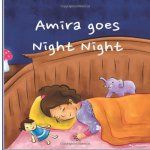
Amira Goes Night Night

The Tale of East – A Little Elephant with a Very Long Trunk

Danny and the White Horse
.
.

Filed under: 3stars, Books for Boys, Chapter Book, Children's Books, Library Donated Books, Series Tagged: alien invasions, aliens, Createspace, George Reagan, Lucia Benito, science fair, stinkbugs
Blog: Kid Lit Reviews (Login to Add to MyJacketFlap)
JacketFlap tags: Children's Books, Middle Grade, kid writers, Guest Post, Createspace, indie author, Heather Ellis, James Ellis, Add a tag
Today Kid Lit Reviews is extremely happy to showcase a new author. Heather Ellis released her debut children’s, The Sugary-Sherburts, in 2013. Her second book, The Sugary-Sherburts and The Stone Witch, released this past January 7, 2014. Both books will be reviewed here this Saturday, March 22, 2014.
There is one amazing catch . . . Heather is a ten-years-old. She will tell us what it was like to work with an illustrator, whom she calls Dad.
What is it Like Working with My Dad as an Illustrator on My Books?
My name is Heather and I am 10, from Yorkshire in England. I have luckily written and self-published three children’s books aimed at 8 -11 years old.
I work quite a lot with my dad as he illustrates my books. I thought it would be nice to tell you about how that works and what it’s like.
My book writing first started properly in 2013. My dad used to draw for (and with) me when I was much younger, because we both like drawing. My dad is good at drawing, better than me anyway.
When I published my first book (called The Sugary-Sherburts – in 2013) I didn’t always want to put pictures in my book. CreateSpace.com needs a minimum of 25 pages to create a book – I think I was a couple of pages short and it helped fill up a couple of pages when my dad drew for my book. However everyone who bought the books said it really gives the books character – so I started putting pictures in all my books, my dad draws them all.
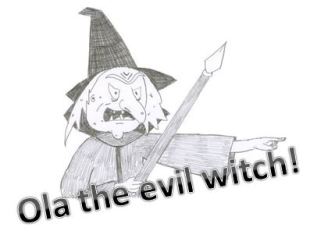
Evil Witch Ola from The Sugary-Sherburts and The Stone Witch
It wasn’t an accident that I worked with my dad for illustrations on my books. He could draw well and I didn’t have to pay him any money to illustrate my book. I never thought about using another illustrator because of the cost (I am only 10 after all!). Working with my dad is great (and easy!) because I don’t have to tell him what to draw. He usually reads my books a lot and has his own ideas and tells me what he thinks. Another good thing about working with my dad is that he doesn’t have a deadline either. Normally the opposite, he is usually asking me to be quicker with my writing when he wants to draw a certain part of the book.

Charlotte from Sugary-Sherburt
My favourite book illustrator is Axel Scheffler of The Gruffalo books; his drawings are awesome and so colourful! I do like colour in kidslit books but I told my dad to keep my pictures plain black and white. I like black and white and that was my decision.
If there is something I don’t like about one of his drawings – I do ask him to change it and redraw it. He is ok with that and doesn’t take offence! For example when I wrote Rosie and Camilla’s Candyland Adventure, he drew a pointy moustache on one of the characters called Professor Quirk. The moustache didn’t make him look very friendly – so he drew him again for me without (the moustache).
The Sugary-Sherburts was my dad’s very first book that he ever illustrated and now he has done three. I asked him if he always wanted to be an artist or illustrator. He say he knew that he was not bad at sketching with a pencil when he was little – but he always moans that he can’t use a paint brush – so he never really wanted to be an artist full time.
I would never draw my own pictures for my books, because I can’t really draw very well.
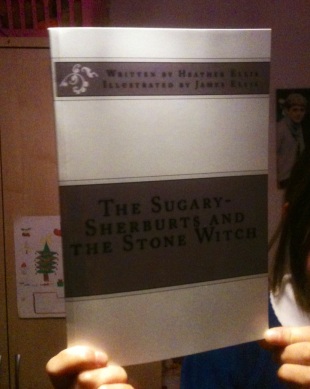
My very first copy that arrived in the post!
Here is a link to my latest book called The Sugary-Sherburts and The Stone Witch – paperback — kindle version.
.
Thank you for reading my blog post, I hope you liked it.
Heather Ellis
Website – www.heatherellisbooks.co.u k
Blog – http://heatherellisbooks.wordpress.com

The Sugary Sherburts 2013

The Sugary-Sherburts and The Stone Witch 1/07/2014
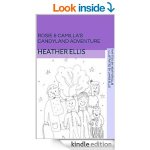
Rosie and Camilla’s Candyland Adventure 1/08/2014
Filed under: Children's Books, Guest Post, Middle Grade Tagged: Createspace, Heather Ellis, indie author, James Ellis, kid writers
Blog: Christina Wald's Design and Illustration Blog (Login to Add to MyJacketFlap)
JacketFlap tags: amazon, wordsworth and the dragon, CreateSpace, Scotti Cohn, Add a tag
 |
| The LAST illustration... More adventures soon? Of course the book ends with a game night! |
We will have an update once soon on when the book will be available.
 |
| The King's Guard... Maybe we will see them again? |
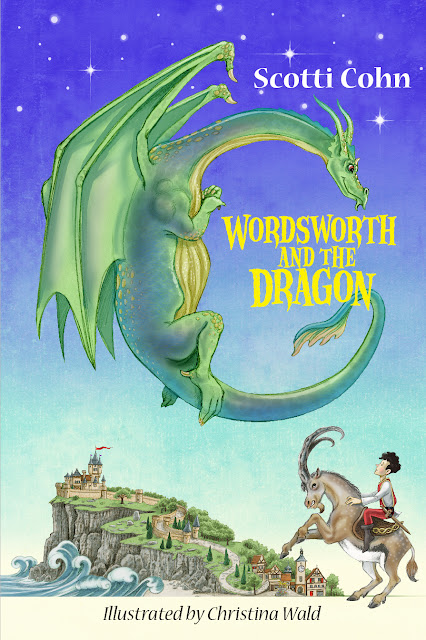 |
| Final cover design... |
Blog: Writing and Illustrating (Login to Add to MyJacketFlap)
JacketFlap tags: Amazon, Manuscripts, publishers, submissions, Young Adult Novel, Get Published, CreateSpace, Places to sumit, Contest, Breakthrough Novel Award Contest, Add a tag
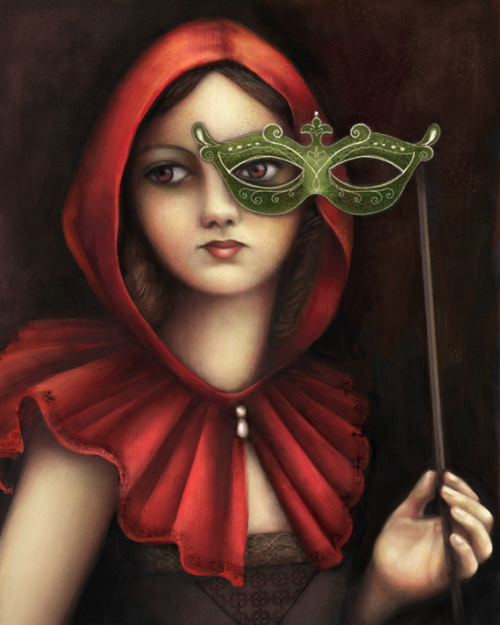
The above illustration was sent in by Author/illustrator Carlyn Beccia. In 2008 she debuted with, Who Put the B in the Ballyhoo? which was a the Golden Kite honor recipient for picture book illustration. In 2009, The Raucous Royals was the winner of the International Reading Association’s 2009 Children’s and Young Adult Book Award for Intermediate-Nonfiction. Her latest release, I Feel Better with a Frog in my Throat was the nonfiction picture book Cybil Award winner, Parent’s Choice Silver Honor medalist, an Oppenheim Toy Portfolio award winner and received a Silver Honor from the California Reading Association’s Eureka! Nonfiction Children’s Book Awards.
Here is a no-fee Novel Writing Contest I thought you might like to know about. They date to submit opens on January 14th, so you have a few weeks to get your manuscript ready.
The Amazon Breakthrough Novel Award Contest is right around the corner. You won’t want to miss this incredible opportunity to win a publishing contract with Amazon Publishing. Now in its sixth year, this international contest promises to be the best yet. Here’s what’s new:
One Grand Prize winner will receive a publishing contract with an advance of $50,000, and four First Prize winners will each receive a publishing contract with an advance of $15,000. Visit the Prizes page for the full list of prizes and details.
We’ve expanded the categories to include five popular genres: General Fiction, Romance, Mystery/Thriller, Science Fiction/Fantasy/Horror and Young Adult Fiction. And we’re accepting entries from more countries than ever before. For complete eligibility details, view the official contest rules, or read details on how to enter.
Amazon Publishing is the official publishing sponsor for 2013 — which means a faster publishing timeline, higher royalties, ability to launch the books in multiple formats (print, audio, ebook) and worldwide distribution. Visit CreateSpace to learn more.
Preparing Your Entry
1) Prepare a strong pitch. More than a summary, your pitch should highlight your concept, protagonist, setting and writing style—all the elements that make your story unique. View sample pitches from past entrants.
2) Select the Genre that best fits your book: General Fiction, Romance, Mystery/Thriller, Science Fiction/Fantasy/Horror, or Young Adult.
3) Stay within the word-count limits — pitch, up to 300 words; excerpt, 3,000 to 5,000 words; manuscript, 50,000 to 150,000 words.
4) Remove all identifying information from your pitch, excerpt and manuscript, including: your name and/or pen name, contact information, any awards received for your book and an author bio/resume.
5) Submit all your materials in the English language.
6) For complete entry requirements, view the Official Contest Rules.
7) Create an account with CreateSpace (if you haven’t already).
(1) the complete version of your manuscript that is between 50,000 and 150,000 words (“Manuscript“);
(2) up to the first 5,000 words, but not less than 3,000 words, of your Manuscript, excluding any table of contents, foreword, and acknowledgments (“Excerpt“);
(3) a pitch of your Manuscript consisting of up to 300 words (“Pitch“); and
(4) the personal information required on the entry form. (1-4 collectively, an “Entry“). We will not review any Entry that does not comply with these Official Rules. Entries for General Fiction must have an accompanying genre selection.
ENTRY REQUIREMENTS. You must be the only author of your Manuscript, and your Manuscript must be a novel between 50,000 and 150,000 words. Any Manuscript submitted as an Entry written by two or more authors will not be eligible. Additionally, poems, short stories, and collections of works are not eligible. Your Manuscript, Excerpt, and Pitch must:
(a) be your original creation;
(b) be fictional;
(c) be in the English language;
(d) be of interior black and white text without images;
(e) not currently or previously have been the subject of a publishing agreement with any publisher (but you may submit your self-published novel if you retain all worldwide distribution rights in and to the novel);
(f) not include your real or pen name anywhere in the Manuscript, Excerpt, or the Pitch;
(g) not include any information that identifies the author in any way including, but not limited to, a resume, previous awards received for the work, or the identity of additional works by the author, but excluding any file document properties that may identify the author; and
(h) meet the content guidelines found at http://www.amazon.com/contentguidelines (which are incorporated in to these Official Rules by this reference).
Additionally, you must submit your Manuscript digitally in Microsoft Word .doc, .docx, .rtf, or .txt format. Any entry that we determine, in our sole discretion, to meet these requirements will be considered a “Valid Entry.” You may be represented by an agent on the condition that you – not your agent – agree to comply with these Official Rules.
Talk tomorrow,
Kathy
Filed under: Contest, Places to sumit, publishers, submissions, Young Adult Novel Tagged: Amazon, Breakthrough Novel Award Contest, CreateSpace, Get Published, Manuscripts
Blog: Kid Lit Reviews (Login to Add to MyJacketFlap)
JacketFlap tags: 3stars, Library Donated Books, carnival barkers, carnival game, John Arnold, not chickens, prize ducks, waddles, reviews, book review, cats, carnivals, circus, autobiography, ducklings, children's book, self published, Debut Author, bluebirds, ducks, childrens book review, farms, Createspace, Add a tag
3 Stars Autobiography of a Duck John Arnold 36 Pages Ages: 7 and up …………. Autobiography of a Duck is just that, the life of one Pekin Duck, not a chick, as told by the duck. Duck hatched and then lived with his siblings and his mother on a farm. Then one day, some humans [...]![]()
Blog: Becky's Book Reviews (Login to Add to MyJacketFlap)
JacketFlap tags: Nonfiction, 2012, j nonfiction, CreateSpace, review copy, Add a tag
Growing Up Humming. Mike Spinak (text and photographs). 2012. CreateSpace. 46 pages.
Growing Up Humming chronicles the time the two Anna's hummingbirds chicks spend in the nest. Readers meet the mother hummingbird, Big Sister, and Little Sister. (Big Sister is two days older than Little Sister.) Through text and photographs, readers can learn more about the baby chicks leading up to the oh-so-important day when they're ready to leave the nest and fly. (Big Sister is ready to leave the nest much sooner than Little Sister who is a bit reluctant.) There are over thirty pages of photographs, and these are quite fascinating showing off these birds in great detail. The text explains what daily life is like for these chicks, what changes they are undergoing day by day, etc. I enjoyed both the text and the photographs. I thought the book was very informative.
This nonfiction picture book would be great for little nature lovers or little bird lovers. The photographs and text complement each other nicely. The narrative flows as easily as a story, but, it has plenty of information as well.
Read Growing Up Humming
If you are interested in birds and baby chicks
If you are looking for nonfiction picture books to share with your child
© 2012 Becky Laney of Becky's Book Reviews
Blog: wonkyworks (Login to Add to MyJacketFlap)
JacketFlap tags: createspace, children's books, self published, Add a tag
The Createspace paperback versions of my books are now available in the United kingdom, priced at £6.99 each.
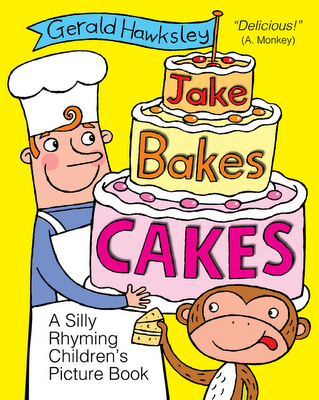
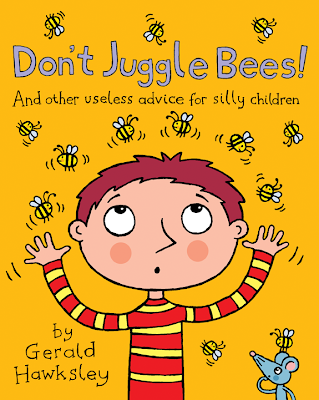
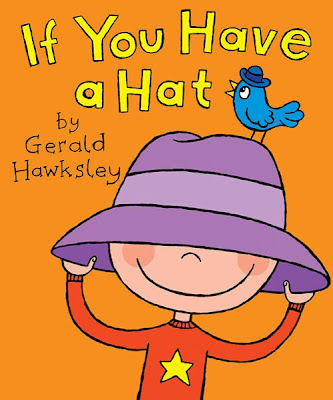
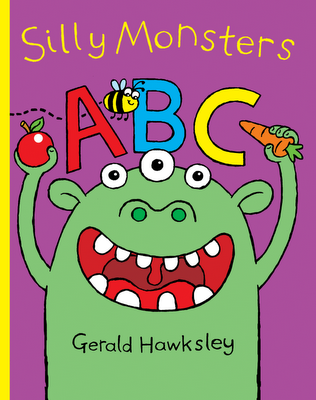
Blog: Jrpoulter's Weblog (Login to Add to MyJacketFlap)
JacketFlap tags: picture books, Animals, Zoo, wild animals, children's verse, zoo animals, Jo Linsdell, Createspace, Out and About at the Zoo, children's books, illustration, Add a tag
Why Choose Self-Publishing – Jo Linsdell’s experience as a new children’s picture book author
“Why did you choose to self publish?”
I wanted full control over every aspect of the book. I wrote the story for my son and designed it to suit his tastes. the fact that he played such an active role in it’s creation makes it all the more special to me. By self publishing I got to call all the shots and make it exactly as I wanted it.
“Why did you choose to do the whole book yourself, instead of collaborating with a writer or an illustrator? Are there drawbacks to going it alone”
I studied art and design at college and love it. I figured I might as well put both my writing skills and my illustrating skills to practice. Why hire someone else when i can do it myself? There is a down side to going it alone though. For example, I had no problems in sketches the illustrations for the book, but making them digital and print quality was a whole different story. I’d never used a graphic program before and so it was a huge learning curve for me. Luckily for me, one of my tech savvy friends was on hand to give me advice and assistance. he saved the day more than once ![]()
“How has the experience been for you so far? “
Great. This book has been so much fun to do right from the beginning. I’m having fun with the marketing side of things too.
Is the process something anyone could undertake or do you need to be tech savvy?”
I think a certain amount of tech-savviness is definitely a plus. If you’re not lucky enough to have a graphic friend to help out with the technical stuff than I suggest going a different route. There’s so much you need to know, from what colours you can use to dealing with transparencies and layers, in order to get a quality end result. Producing a children’s book is not as easy as some people might think.
“How cost effective is self publishing?”
Very. I spent no money in the creation of the book. I wrote the text and did the illustrations myself. I’m also lucky to have a fantastic network of friends that volunteered to proofread for me and help out with my technical questions. My network has been amazing in supporting my promotional tour to launch the book too with many of them offering to host me on their sites, review the book and help spread the word.
The only cost I’ve had was $25 to have the book added to expanded distribution via createspace (to make it available to bookstores, onlne retailers, libraries etc…) and the cost of a proof copy.
“How time effective is self publishing with regards to all the promotional and marketing work?”
Marketing takes up a lot of time. I don’t think self publishing differs particularly from other publishing routes when it comes to marketing though. Even if you publish through a traditional publisher you will be expected to do a certain amount of promoting yourself.
“Would you choose self-publishing over traditional publishing?”
I did. Self publishing was plan A for me. The reputation attached to self publishing has changed a lot over the last few years and even big name authors are ditching their traditional publishers in favour of self publishing their work.
“Would you self publish again?”
Definitely. I would only consider using a traditional publisher if I couldn’t get the result I wanted on my own.
Jo Linsdell
REVIEW
Add a CommentBlog: wonkyworks (Login to Add to MyJacketFlap)
JacketFlap tags: print on demand, createspace, new children's picture book, Add a tag
My instructional book of Dos and Dont's is now available as a paperback. Unfortunately only available from Amazon.com in the USA. It has been published through Createspace, Amazon's Print On Demand operation.DO rush and buy this book. DON'T forget to take a look.
Blog: Publishing a Picture Book - Getting it all together (Login to Add to MyJacketFlap)
JacketFlap tags: lightningsource, Molly Greene, books, authors, Writers, self publishing, pros and cons, how to, createspace, Add a tag
Blog: Elizabeth Varadan's Fourth Wish (Login to Add to MyJacketFlap)
JacketFlap tags: book reviews, interviews, friends, publishing, Kindle, CreateSpace, The Fourth Wish, Add a tag
I'll work backwards:
Interview: Diane Gross writes book reviews for Sacramento Book Examiner and will be reviewing my book later in the week (I'll tweet it when she does). The two part interview is prelude to the review, and you can read part one of her interview here.
 Kindle: Ah, Kindle! Friends have been telling me I should put my book on Kindle, and so I decided to do just that. Originally, I self-published The Fourth Wish through CreateSpace, a very user-friendly publishing site with links to Amazon -- you can sell your book through both sites. CreateSpace also offers incredible technical support. (I speak gratefully, since I am one who can be one click away from disaster whenever I try new ventures in technology.) They helped me immensely when setting up the original publication, and they helped me set it up for Kindle (charging a small fee to first format the book for Kindle). By phone,
Kindle: Ah, Kindle! Friends have been telling me I should put my book on Kindle, and so I decided to do just that. Originally, I self-published The Fourth Wish through CreateSpace, a very user-friendly publishing site with links to Amazon -- you can sell your book through both sites. CreateSpace also offers incredible technical support. (I speak gratefully, since I am one who can be one click away from disaster whenever I try new ventures in technology.) They helped me immensely when setting up the original publication, and they helped me set it up for Kindle (charging a small fee to first format the book for Kindle). By phone,
Blog: ACME AUTHORS LINK (Login to Add to MyJacketFlap)
JacketFlap tags: Amazon, Katrina, CreateSpace, Add a tag
So I was listening to one of the morning shows yesterday and an interview with the former mayor of New Orleans, Ray Nagin, caught my attention. He had just written a book about his experiences during Katrina threaded with a post analysis of the disaster, an event and period of our history of which just about everyone in the world has some memory. Images of people stranded on roofs and those held hostage in the Superdome are seared in our collective memory, and now with the internet, seared in the digital memory of history.
It was an interesting interview for many reasons, and given his fame as the mayor of New Orleans at such a dramatic time, and given the bad press that the administration at the time received, it wasn’t surprising that a book was written about it nor was it surprising that it was receiving national media attention. What was surprising - at least to me - was that at the end of the interview, he quickly added that he published it through Create Space and it was available through Amazon.
His reasons for choosing CreateSpace are clarified in an interveiw published on USAToday at the following link:
http://www.usatoday.com/life/books/news/2011-06-20-ray-nagin-katrinas-secrets_n.htm
Here's the paragraph that is most telling:
The book covers the first 30 days after the storm. The outspoken Nagin says he chose to self-publish on CreateSpace, a division of Amazon.com, after contacts with publishers left him worried about the editing process, feeling uncertain "that my voice would come out at the end of the day."
Just goes to show us that if the subject is notable enough and the author famous enough, even a self-published book can receive national attention. But it also shows that more and more writers are choosing non-traditional publishing paths to have more control over the process, especially when it comes to preserving their voice.























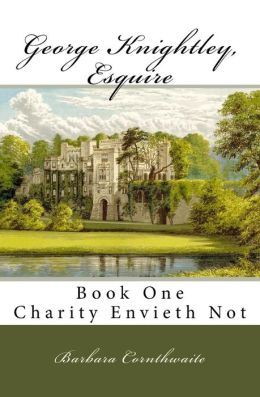



Thanks for laying this out, Roxanne. This is the clearest step-by-step how-to I’ve read in a long time.
Rox, you are a font of knowledge and kind enough to share it. Good information.